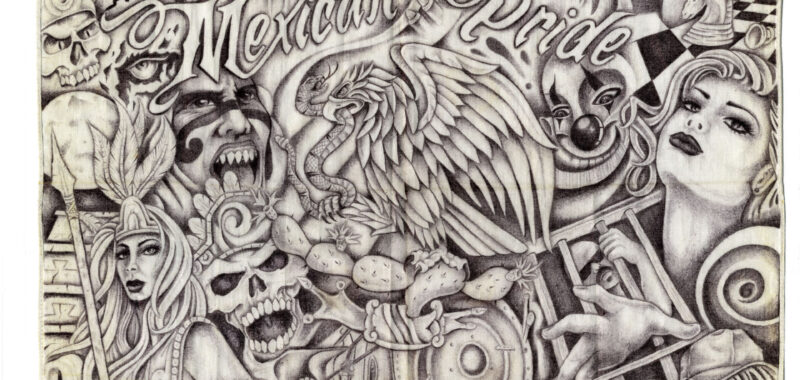Curator Álvaro Ibarra first encountered paño arte growing up in South Texas, where the square handkerchiefs bearing intricate pen drawings sent to loved ones act as a “second skin” proxy for the incarcerated Chicano artists who create them. Now an art history professor at Utah State University, Ibarra’s curatorial project explores paños as a form of therapy, intimacy, communication, and self-determination for incarcerated people whose right to their own art is at the whim of inconsistent laws across the United States.
Paños often cycle from desk drawers of friends to Goodwill shelves to eBay listings, complicating the question of ownership given the lack of property rights for incarcerated people. Using the term artepaño, Ibarra fleshes out the value of understanding paños as a distinct tradition with recurrent iconographic images of Mexican-American culture such as the late Tejana icon Selena Quintanilla or Lady Guadalupe, as well as the harmful recent tendencies to relegate them to “folk art” or fetishize them in an art market context.
At the heart of Ibarra’s project is a moving series of fictional letters to loved ones, fashioned from his own imagination but grounded in community stories and specific paños. Hyperallergic Editor-in-Chief Hrag Vartanian observed during the virtual conversation with Ibarra that this rich, inherently epistolary tradition requires viewers to decipher encoded messages and meanings, reflecting layers of which art history has yet to scratch the surface. We apologize for the slight glitch at the beginning of the event recording.





